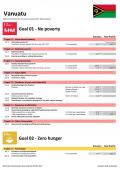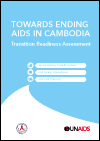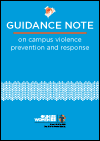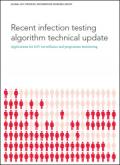What's New
Displaying results 1631 - 1640 of 4911

Resource | Data Sheets,
This Vanuatu SDG datasheet is a supplementary product of the 2017 edition of the Statistical Yearbook, offering an overview of each country in the region with regard to the SDGs. The datasheets present the latest data available for each indicator, together with regional figure as comparator.

Resource | Data Sheets,
This Viet Nam SDG datasheet is a supplementary product of the 2017 edition of the Statistical Yearbook, offering an overview of each country in the region with regard to the SDGs. The datasheets present the latest data available for each indicator, together with regional figure as comparator.

Resource | Guidelines,
This guide considers the many ways in which gender and HIV interact, and how this is influenced by variables such as education, income, age, ethnicity, race, disability, migrant status, health, location, and sexual orientation.
It contains tools, evidence and good practice to ensure that HIV programming responds to and addresses harmful gender norms, structures and stereotypes that act as a barrier to HIV prevention, treatment and care, and the realisation of sexual and reproductive health and rights.

Resource | Publications,
The report examines critical developments on the death penalty for drug offences in law and practice worldwide, revealing one central and unsettling tension: the situation is at once improving and getting worse.
On the one hand, alongside important legal and policy changes, executions for drugs in many High Application States have been steadily declining since 2015. At the same time, political support for the abolition of the death penalty for drug offences has been gathering global momentum. On the other hand, however, these recent signs of progress are being eclipsed by the dramatic surge in extrajudicial executions for drugs in the Philippines, and the ripple effects this is having in the region and beyond.

Resource | Publications,
2016 was a year in which the world faced many major challenges, including disease outbreaks, humanitarian emergencies, and momentous political shifts. The global health community was challenged to ensure the health of the world’s poorest citizens was not forgotten among the headlines. Our task now is to remind the world that investing in health is not an optional luxury, but an essential element to human and economic development.

Resource | Publications,
Cambodia is one of seven countries globally to have achieved the 90-90-90 targets. Eighty eight percent of People Living with HIV (PLHIV) know their status, 87% are on anti-retroviral therapy (ART) , and an estimated 83% of PLHIV on ART have achieved viral suppression. These achievements have been driven by the strong support from the Royal Government of Cambodia and the work of local Civil Society Organizations (CSOs) dedicated to the response, however, the HIV response in Cambodia is largely funded by external sources.

Resource | Publications,
Cambodia’s HIV response over the past two decades has been highly successful and has led the country to be one of seven globally to achieve the 90-90-90 targets (that translates into 73% of all people living with HIV being virally suppressed). The number of new HIV infections has fallen for 63% between 2010 and 2017 in 2017; out of estimated 67,000 PLHIV, 88% know their HIV status, and 87% are receiving anti-retroviral therapy (ART) in Cambodia.

Resource | Publications,
The note is intended to support universities and university administrators, UN staff working with universities in this area, civil society partners, students and other relevant stakeholders—particularly in middle- and low-income countries where there are few resources for addressing violence against women. Universities should adopt targeted measures to address the needs of specific groups, including those most vulnerable and at risk

Resource | Guidelines,
This technical update provides public health officials with guidance on applying HIV incidence assays and testing algorithms for recent HIV infection in order to monitor the HIV epidemic and assess the impact of interventions. A major theme of this update is the importance of calibrating two of the key performance characteristics of recent testing infections algorithms - mean duration of recent infection and false recent ratio - to account for the context in which the testing is being done. This technical update also describes several emerging use cases in the application of recent infection testing algorithms and tests, including those for individual-level use. A final section on further research directions is provided to highlight areas that still require investigation.

Resource | Publications,
On Zero Discrimination Day, UNAIDS is highlighting the right of everyone to be free from discrimination.
No one should ever be discriminated against because of their age, sex, gender identity, sexual orientation, disability, race, ethnicity, language, health (including HIV) status, geographical location, economic status or migrant status, or for any other reason. Unfortunately, however, discrimination continues to undermine efforts to achieve a more just and equitable world. Many people face discrimination every day based on who they are or what they do.





